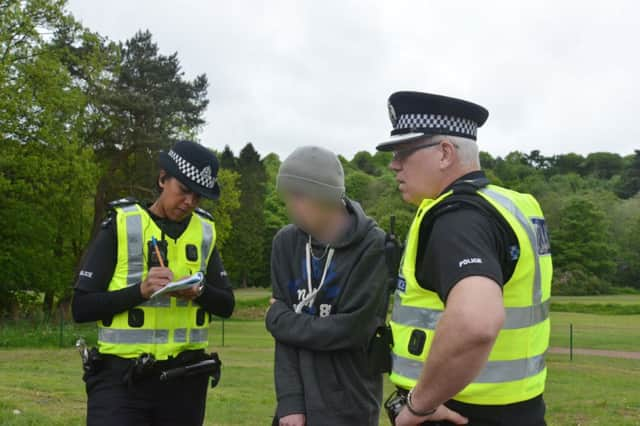Police admit stop and search has more than doubled


Figures released yesterday by Police Scotland show that stop-searches have more than doubled in some areas since the country’s eight regional forces were merged on 1 April last year.
One area recorded a “mind-boggling” rise of more than 19,000 per cent in stop-and-searches for suspected drug-related offences. In Dumfries and Galloway this rose from 16 ito 3,107 in the last year.
Advertisement
Hide AdAdvertisement
Hide AdHowever, the figures also showed increases in the proportion of “positive” searches where alcohol, drugs or weapons were found. A report published in May by the Scottish Police Authority (SPA) concluded there was “no causal link” between a reduction in violent crime and the volume of stop-and-search activity. The report led to criticism of the police after it emerged that hundreds of children and pensioners had been stopped in a nine-month period.
Yesterday, Police Scotland published its own figures, which chart the period 1 April 2013 to 31 March 2014.
The number of searches rose significantly in areas such as Tayside where they were up 130 per cent on the same period last year, from 9,960 to 22,963, and in Fife, where the number of stop-searches climbed from 1,740 in 2012-13 to 8,227 – a rise of almost 400 per cent.
There was also a near-40 per cent rise in Aberdeen and Edinburgh, but the overall number of stop-searches fell by 6 per cent in the Highlands and by 24.5 per cent in Glasgow.
In most areas, the proportion of positive searches where drugs or a weapon were recovered also increased.
Commenting on the publication of the figures, Deputy Chief Constable Rose Fitzpatrick said: “Police Scotland uses targeted, intelligence-led stop and search as one of a number of operational tactics to help prevent and detect crime and anti-social behaviour as part of our commitment to keep people safe.
“The public consistently tell us that violent crime and anti-social behaviour is of major concern to them and as such we use focused stop-and-search principles to reduce violence and prevent offending in public spaces, and are committed to providing information on the use of the tactic, as we have done today.”
The earlier SPA study of stop- and-search made a series of recommendations for the police, including better informing the public of their right to decline.
Advertisement
Hide AdAdvertisement
Hide AdIt said around two-thirds of searches were non-statutory, meaning officers did not need reasonable suspicion and the individual did not need to be informed of their right to refuse. The use of non-statutory stop-and-search is not permitted anywhere else in the UK.
Lib Dem justice spokeswoman Alison McInnes said stop-and-search should remain an important part of a police officer’s “toolkit”, but that it needed to be “evidence-led”.
“In 19 of Scotland’s 32 council areas, there has been an increase in stop-and-search activity. I was surprised to see that Dumfries and Galloway recorded a mind-boggling 19,318 per cent increase in stop-and-search activity in the space of one year.
“It is disappointing that these figures do not tell us how many of these stop and searches were statutory or voluntary.”